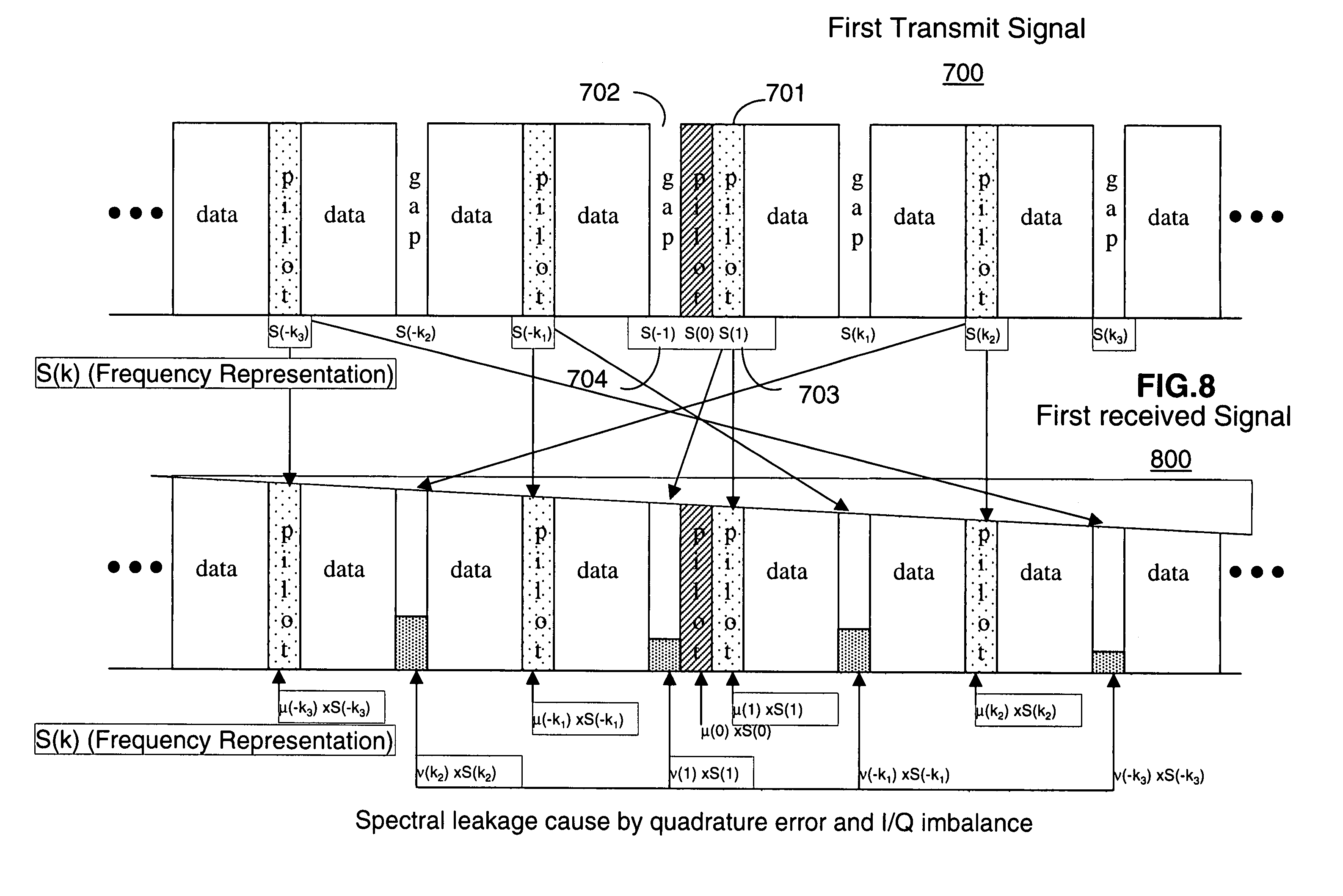I/Q distortion compensation for the reception of OFDM signals
- Summary
- Abstract
- Description
- Claims
- Application Information
AI Technical Summary
Problems solved by technology
Method used
Image
Examples
Embodiment Construction
[0025]FIG. 1 illustrates a block diagram of a communication system 100, including a transmitter 102, a receiver 104, and a communication channel 106, in accordance with the preferred embodiments of the present invention. The transmitter 102 generally includes an information source 108, a modulator 110, and a transmitter channel interface 112. The receiver generally includes a receiver channel interface 114, a demodulator 116, and an information sink 118.
[0026]In the transmitter 102, the information source 108 is electrically coupled to the modulator 110 and adapted to generate a transmit signal stream 109 responsive to receiving an input signal (not shown), which may be generated by an electronic circuit or by a human. The modulator 110 is electrically coupled to the transmitter channel interface 112 and adapted to generate a modulated signal 111 responsive to receiving the transmit signal stream 109. The transmitter channel interface 112 is electrically coupled to the communication...
PUM
 Login to View More
Login to View More Abstract
Description
Claims
Application Information
 Login to View More
Login to View More - R&D
- Intellectual Property
- Life Sciences
- Materials
- Tech Scout
- Unparalleled Data Quality
- Higher Quality Content
- 60% Fewer Hallucinations
Browse by: Latest US Patents, China's latest patents, Technical Efficacy Thesaurus, Application Domain, Technology Topic, Popular Technical Reports.
© 2025 PatSnap. All rights reserved.Legal|Privacy policy|Modern Slavery Act Transparency Statement|Sitemap|About US| Contact US: help@patsnap.com



